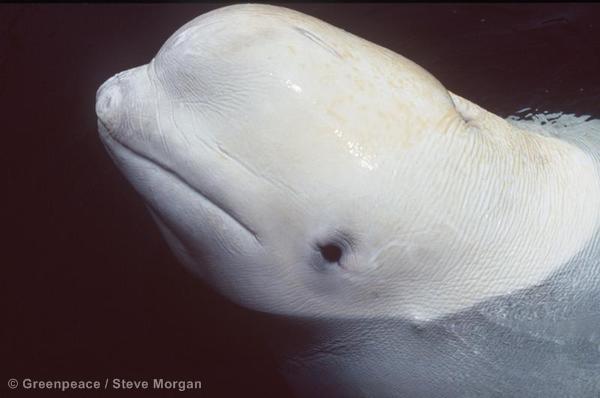Estimated population: 62,000-85,000 worldwide. Cook Inlet population considered depleted.
Ways to identify this species: toothed whale, small head, adults have white skin, babies appear gray.
Beluga Whale Biology
- Beluga whales are migratory and inhabit the Arctic and sub-arctic regions of Russia, Greenland, and North America. They travel to warmer waters for spring. Beluga whale populations in Cook Inlet, Alaska do not migrate.
- Adult males range from 11 to 15 feet in length and weigh up to a ton. To preserve body heat in chilly Arctic waters, the beluga’s blubber can be up to five inches thick.
- The beluga’s dorsal fin is only a bump; a larger fin would get in the way as the whale breaks through the ice to breathe.
- Beluga whales produce a variety of sounds, including whistles, squeals, moos, chirps and clicks. They are very social animals, hunting, migrating and living in pods numbering into the hundreds.
Threats to Beluga Whales
- Because belugas prefer to live in coastal waters, they are threatened by human pollution and the risk of entanglement in fishing nets.
- Beluga whales were hunted during the 18th and 19th centuries.

